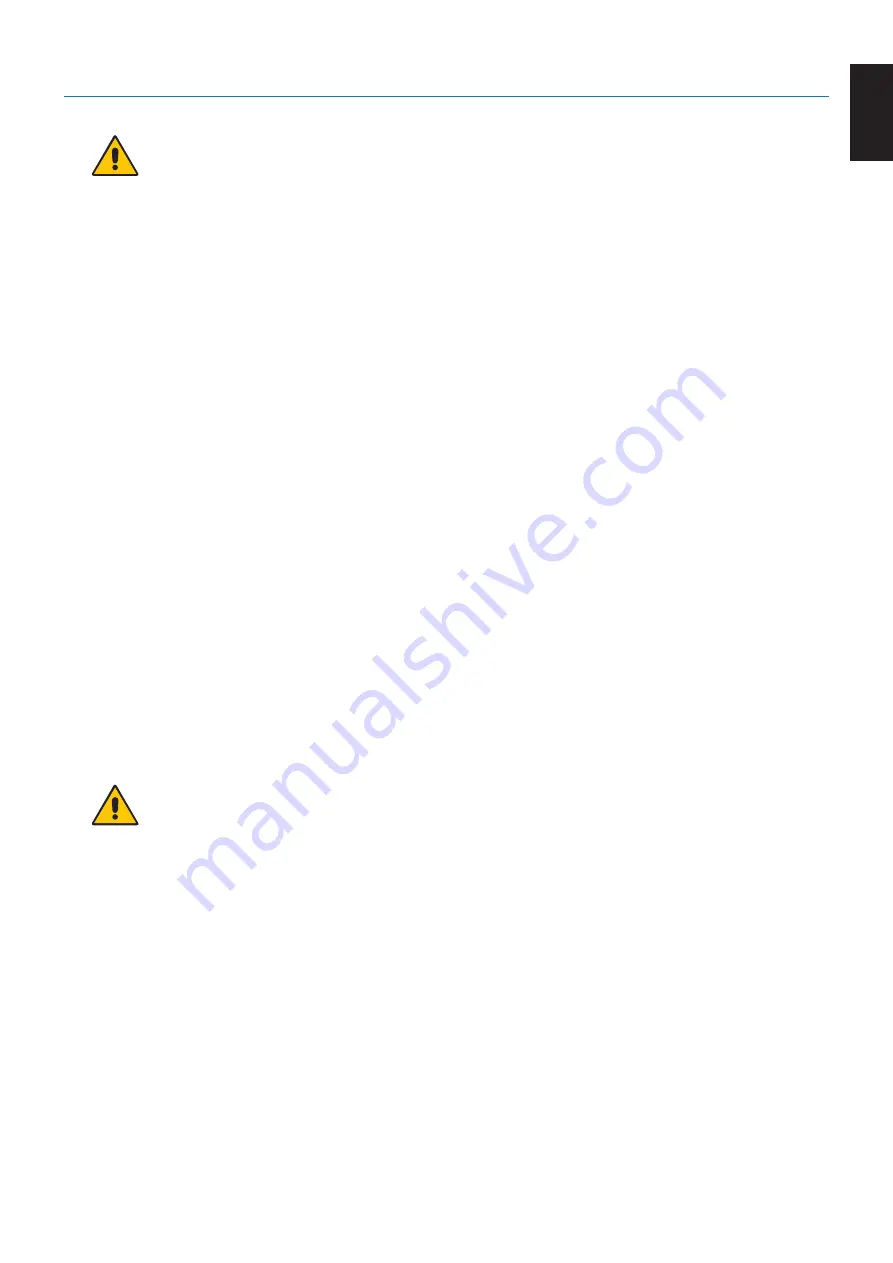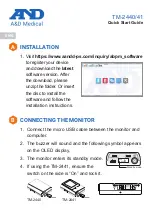
English-3
English
Recommended use
Safety Precautions and Maintenance
FOR OPTIMUM PERFORMANCE, PLEASE NOTE
THE FOLLOWING WHEN SETTING UP AND
USING THE LCD COLOR MONITOR:
• DO NOT OPEN THE MONITOR.
There are no user serviceable parts inside and opening or removing covers may expose
you to dangerous shock hazards or other risks. Refer all servicing to qualified service personnel.
• Do not spill any liquids into the cabinet or use your monitor near water.
• Do not insert objects of any kind into the cabinet slots as they may touch dangerous voltage points, which can be harmful or
fatal, or may cause electric shock, fire or equipment failure.
• Do not place any heavy objects on the power cord. Damage to the cord may cause shock or fire.
• Do not place this product on a sloping or unstable cart, stand or table, as the monitor may fall, causing serious damage to
the monitor.
• The power supply cord you use must have been approved by and comply with the safety standards of your country.
(e.g. Type H05VV-F 3G 0.75 mm
2
should be used in Europe).
• In the UK use a BS-approved power cord with a molded plug having a black (5A) fuse installed for use with this monitor.
• Do not use the monitor outdoors.
• Do not bend, crimp or otherwise damage the power cord.
• Do not use the monitor in high temperature, humid, dusty, or oily areas.
• Do not cover the vent on the monitor.
• Vibration can damage the backlight. Do not install in areas where the monitor will be exposed to continual vibration.
• If monitor or glass is broken, do not come in contact with the liquid crystal and handle with care.
• To prevent damage to the LCD monitor caused by tipping over due to earthquakes or other shocks, make sure to install the
monitor in a stable location and take measures to prevent falling.
• Immediately turn off the power, unplug your monitor from the wall outlet and move to a safe location, then refer servicing to
qualified service personnel under the following conditions. If the monitor is used in this condition, the monitor may cause fall,
fire and electric shock:
• If the monitor stand has been cracked or peeled.
• If you notice any structural damage such as cracks or unnatural wobbling.
• If the monitor has an unusual odor.
•
If the power supply cord or plug is damaged.
• If liquid has spilled or objects have fallen into the monitor.
• If the monitor has been exposed to rain or water.
• If the monitor has been dropped or the cabinet has been damaged.
• If the monitor does not operate normally by following operating instructions.
• Allow adequate ventilation around the monitor so that heat can properly dissipate. Do not block ventilated openings or place
the monitor near a radiator or other heat sources.
• Do not put anything on top of the monitor.
• The power cable connector is the primary means of detaching the system from the power supply.
The monitor should be installed close to a power outlet which is easily accessible.
• Handle with care when transporting. Save packaging for transporting.
• Handle with care during installation and adjustment to prevent personal injury and damage to the monitor.
• Do not connect headphones to the monitor while you are wearing them. Depending on the volume level, it may damage your
ears and cause loss of hearing.
• Please tighten all screws. A loose screw may cause the monitor to fall off the arm or stand.
• Do not touch the LCD panel surface while transporting, mounting and setting.
Applying pressure on the LCD panel can cause serious damage.
Image Persistence:
Image persistence occurs when a residual or “ghost” image of a previous image remains visible on the
screen. Unlike CRT monitors, LCD monitors’ image persistence is not permanent, but a still image being displayed for a long
period of time should be avoided.
To alleviate image persistence, turn off the monitor for as long as the previous image was displayed. For example, if an image
was on the monitor for one hour and a residual image remains, the monitor should be turned off for one hour to erase the image.
NOTE:
As with all personal display devices, NEC DISPLAY SOLUTIONS recommends using a moving screen saver at regular
intervals whenever the screen is idle, or turn off the monitor when not in use.
CAUTION
WARNING






































